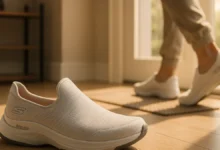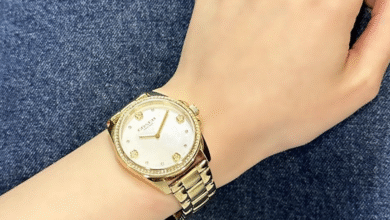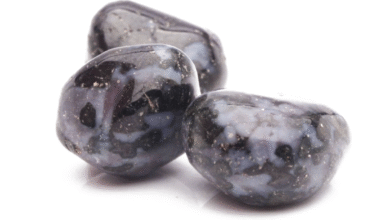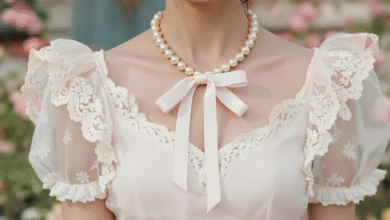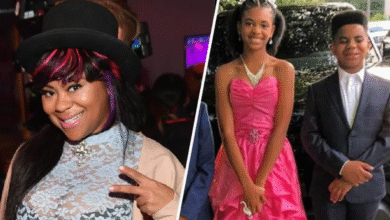Best Hair Colors for Warm Undertones to Enhance Your Natural Glow
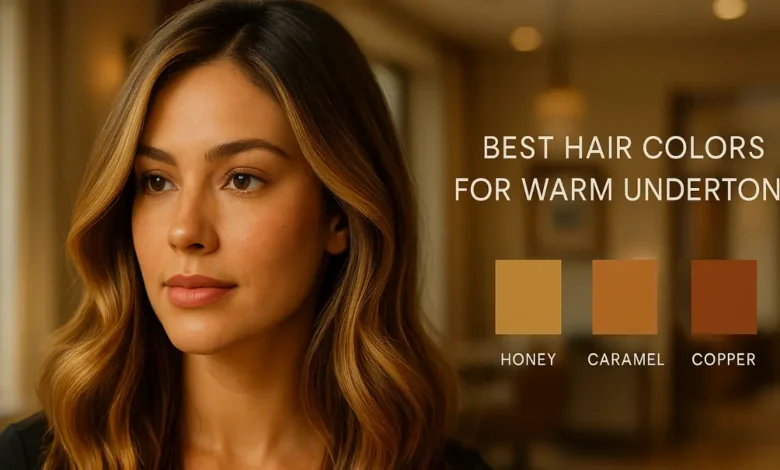
Discover the best hair colors for warm undertones — from golden browns and copper hues to honey blondes. Expert tips and FAQs to help you glow.
If your skin has warm undertones — think golden, peachy, or sunlit tones beneath the surface — then the hair colors you choose can either bring out its glow or dull it. In this article, I’ll walk you through how to tell whether you have warm undertones, what hair hues complement them best, which shades to avoid, and how to maintain your color so it stays vibrant. Think of me as your friendly, seasoned colorist guiding you to look your best.
Your undertones are the secret foundation under the visible color of your skin. Two people might both have medium skin, for example, but one might lean warm (yellow, golden, peachy), while the other leans cool (pink, blue, rosy). The right hair color plays a dramatic role in how healthy and radiant your skin looks. A warm-toned hue can make your skin glow; a mismatched one might make it seem flat or dull.
So let’s dive in — first by identifying warm undertones, then exploring flattering colors (with examples and ideas), plus maintenance tips, styling tricks, and answers to your burning questions.
Understanding Warm Undertones
What Are Undertones — and Why They Matter
When you look at your skin, you see surface color — light, medium, deep — but underneath that is a more subtle hue called the undertone. That undertone doesn’t shift much, even when your skin tans or changes with seasons. Most color theory (and expert stylists) break undertones into three categories: warm, cool, and neutral.
If your undertone is warm, it means your skin has more yellow, peach, or gold pigments beneath. People with warm undertones usually tan more easily (rather than burn), and often look better in warm colors (like golds, earthy tones, rusts) than in icy or ashy ones.
Why does this matter so much when picking hair color? Because hair is essentially an accessory to your face — and if it clashes with your undertone, your skin might look washed out, your features less defined, or your whole look disjointed. But when hair color works with your undertone, it can enhance your glow, make your eyes pop, and elevate your style.
How to Know If You Have Warm Undertones
Before picking a shade, let’s confirm whether you truly have warm undertones. These are some simple tests:
- Vein test at your wrist in natural light: If your veins appear more greenish than blue, it’s a strong sign of warm undertones.
- Jewelry test: Do you look better in gold jewelry (rather than silver)? Warm undertones tend to pair better with gold.
- White vs. off-white drape test: Wear a stark white fabric and also a cream or ivory fabric near your face. If the warmer color (ivory, off-white) makes your skin look more radiant, that hints at warm undertones.
- Sun behavior: If you tan easily rather than burning severely, that can also point to a warm undertone.
Many experts agree on these tests when helping clients choose flattering hair colors. Wella Professionals+2NGLORA+2
If all signs point to warm undertones, you’re in the perfect position to choose a palette of hair shades that naturally enhance your inherent warmth.
Best Hair Colors for Warm Undertones
Here are hair hues that work beautifully when your undertones lean warm. I’ll break them into categories (blondes, browns, reds/reds-blends), with examples, styling ideas, and cautions.
Warm Blondes & Honey Hues
For those who want to lighten their hair, warm blondes and honey tones can be stunning — as long as you avoid icy or ashy “cool blonde” shades that may clash with your undertone.
- Honey Blonde: This shade blends golden and caramel tones with a slight reddish depth, giving you a warm, luminous look. It flatters warm undertones especially because the gold pigment resonates with your skin’s internal glow.
- Golden Blonde / Warm Golden Blonde: This hue is a classic for warm undertones — think buttery, sunny, softly glowing tones. It’s more forgiving than platinum or ash blondes and delivers a radiant effect.
- Buttery Blond / Champagne with Warm Base: If you’re going lighter, choose variants with a warm base so your blonde doesn’t read as cold or washed out.
- Strawberry Blonde: This is a playful mix of blonde and red — a golden strawberry shade can bring dimension and works especially well for fair-to-medium skin with warmth.
These warm blonde options align with what many color experts recommend for warm undertones. NGLORA+2Ochoa Salon & Spa+2
Caution: Going very light (especially on darker hair) risks brassy or yellow undertones. Always ask your colorist for a warm toner or gloss to eliminate harsh yellow cast.
Rich Browns & Caramel Tones
If you prefer staying in darker, more natural territory, these brown and caramel hues are ideal for warm undertones:
- Chocolate Brown: A deep, rich brown with warm depth. When you add subtle golden highlights or warm red tones, it glows against warm skin.
- Chestnut Brown: Chestnut leans more reddish than chocolate, adding depth and warmth simultaneously.
- Caramel Brown & Caramel Highlights: A caramel tone infused into a brown base (or as highlights) adds brightness without drifting into cool territory.
- Bronze & Bronze-Infused Browns: Bronze shades meld golden and brown tones for a multi-dimensional, polished finish.
- Bronde (Warm Bronde): This hybrid of brown and blonde can be excellent for warming your look — especially if the blonde tones lean warm gold rather than ash.
These choices reflect what stylists suggest for warm undertones, advising “look for names like ‘golden’, ‘bronze’, ‘copper’ on your hair box.” Wella Professionals+2Ochoa Salon & Spa+2
Longevity tip: Browns tend to fade more slowly than light blondes — still, use color-safe shampoos and occasional glosses to refresh.
Copper, Auburn & Reddish-Hued Options
Because your undertones already skew warm, red and copper shades can harmonize beautifully — as long as they’re not overly blue-based.
- Copper Brown / Soft Copper: This is a vivid choice but not overly dramatic. It enriches your hair while maintaining harmony with warm skin.
- Cinnamon & Warm Auburn: A spicy blend of red and brown that flatters warm undertones.
- Mahogany (Warm Variant): A deeper reddish-brown that adds richness and dimension without overpowering.
- Amber / Warm Red Tones: These bold tones can glow if balanced with some brown or gold.
- Metallic Ginger / Warm Ginger Blends: With the right balance, these tones can give a vibrant but wearable red that complements warm undertones.
Stylist guides repeatedly list copper, amber, and red-based tones as top picks for warm skin hues. Ochoa Salon & Spa+2NGLORA+2
Warning: Pure reds fade faster, especially with washing or sun exposure. Use color-depositing conditioners or gloss treatments to preserve vibrance.
What to Avoid (or Use With Caution)
Even though warm undertones give you a broad palette, some tones are less flattering or risk washing you out:
- Ash / cool blondes (platinum, icy, ash blonde) — the cool or gray base can clash with your warm undertone, making your skin look dull.
- Blue-black or cool black — the coldness can draw out sallowness in warm skin.
- Extreme pastels or icy silvers — unless carefully balanced with warm highlights, they can fight your inherent glow.
- Ultra-neutral or mauvey fashion shades — they may neutralize your warmth too much and leave your look flat.
Many colorist resources caution against overly cool, icy, or ashy tones for warm undertones. NGLORA+2L’Oréal Paris+2
How to Choose the Right Shade (Personalization Tips)
It’s one thing to know the flattering colors; it’s another to pick which version of those colors suits you. Here are extra expert tips to fine-tune your choice:
Consider Your Natural Base
Stay within about three levels up or down from your natural hair color for more natural results. Going too far beyond that risks damage and unnatural contrast. Many experts suggest lighter changes are safer when done gradually. garnier
If your natural hair is very dark, maybe begin with a subtle warm brown or copper tint before jumping into blonde.
Mind Your Contrast Level
Your face’s natural contrast (light skin with dark eyes, etc.) can guide how bold your hair should be:
- For high contrast (dark hair, fair skin, bold features), you can push for deeper, richer tones or striking reds.
- For low contrast (softer features, medium skin, medium-dark hair), milder warm shades that don’t shift too drastically are often more flattering.
Decide on Dimension vs. Solid Tone
You might prefer:
- Solid colors: one tone all over — easier upkeep, bold effect.
- Highlights / Balayage: adds dimension, softens growth lines, and lets you combine warm tones naturally.
- Glosses / Tone overlays: to adjust undertone balance or refresh color between major dye jobs.
Skin Depth (Fair, Medium, Deep) Matters
- Fair warm skin: strawberry blonde, soft gold blondes, light copper, warm caramel.
- Medium warm skin: honey bronze, warm chestnut, golden blonde, rich copper.
- Deep warm skin: golden brown, copper, warm caramel, toffee — deeper warm colors prevent washout.
Test Strand & Patch
Always do a strand test and patch test. That small section will show how pigments react with your base before committing to full color.
Color Maintenance & Aftercare
Once you’ve achieved your perfect warm-toned hair color, keeping it fresh and glowing is key. Here’s how:
Use Color-Safe Products
- Sulfate-free shampoos and conditioners help prevent color stripping.
- Bond-repairing treatments after lightening help rebuild hair from chemical wear.
- Gloss / toner treatments every few weeks can neutralize brassy shifts and reinforce undertones.
Limit Washing and Use Cool Water
Washing too often fades pigments. Try to wash only 2–3 times per week. Use cool or lukewarm water — hot water opens the hair cuticle, letting pigment escape.
Protect From Sun & Heat
- Use UV-protectant sprays or wear hats to reduce sun-driven fading.
- Always use heat protectant when styling with tools.
- Limit heavy heat styling; steer toward low-heat or air-dry options when possible.
Touch-Ups & Gloss
- For roots, touch up only sections as needed rather than re-dyeing the whole head.
- Use semi-permanent glosses with warm tone pigments to boost your hue mid-cycle.
- Alternate your routine with clarifying treatments (rarely) to keep build-up in check.
Deep Condition & Hydrate
Colored hair is more porous. Weekly deep conditioning or masks help retain moisture and gloss. Think of your hair as fabric that needs periodic “re-sealing.”
Table: Warm-Toned Hair Color Ideas & Ideal Skin Depth
| Skin Depth (Warm Undertone) | Recommended Shades | Notes / Tips |
|---|---|---|
| Fair to Light Warm | Strawberry blonde, honey blonde, soft copper | Keep tones lighter, avoid overpowering reds |
| Medium Warm | Golden blonde, caramel brown, warm chestnut, soft auburn | Add highlights for dimension |
| Deep Warm | Rich copper, bronze, golden brown, deep caramel | Avoid overly light tones that cause contrast issues |
Quotes from Experts & Stylists
“Those with warm skin should choose hair colors with red, orange, or gold pigments — earthy hues that amplify the skin’s warmth.”
— From professional color guides NGLORA
“Warm hair tones add life to a dull complexion, add shine, and look healthier … pretty golden blondes, a nice caramel highlight, and maybe a beautiful auburn brown.”
— A stylist on a forum discussing warmth in hair color Reddit
These voices reinforce the idea that warm hair harmonizes with warm skin — and that warmth itself has often been undervalued in recent trends.
Frequently Asked Questions (FAQs)
Q: Can someone with warm undertones ever pull off cool or ash blondes?
A: It’s possible—but it’s trickier. To make a cool or ash blonde work, you’d need to manage the contrast carefully (e.g. using warm gloss overlays or subtle warm highlights). You risk your skin appearing washed out or gray if the cool shade is too strong. Many stylists recommend staying on the warm side for the most foolproof results.
Q: How quickly do red or copper hair colors fade?
A: Red and copper tones tend to fade faster than browns or golden tones because their molecules are larger and less stable in oxidation. With washing, sun, and heat styling, you may start seeing fading in a few weeks. But regular glosses, color-depositing conditioners, and minimizing harsh heat/sun exposure can slow this.
Q: If my natural hair is dark, can I go straight to a golden blonde?
A: Going from dark to golden blonde in one step is risky. It often results in brassy undertones or damage. A safer path is to lift gradually — maybe first to a warm brown or caramel tone, then lighten further. Always ask for a warm toning gloss after each lightening step.
Q: My hair turned brassy after coloring — what can I do?
A: Use a purple or blue toning shampoo (depending on warmth of brassy tone) very sparingly to counteract the undesired warm cast. Follow with hydrating treatments. Also, consider adding a warm gloss or toner to rebalance the hue.
Q: Can I mix warm and cool tones (for example, warm base with cool highlights)?
A: Yes — if done with intention. For instance, a warm brown base with muted cool highlights can create dimension without overwhelming warm skin. But too many cool highlights may start skewing back into clash territory. Subtlety is key.
Q: Does skin tone change with seasons, and should I adjust hair color accordingly?
A: Your actual skin depth might shift slightly (e.g. you tan in summer), but your undertone remains consistent. You can adjust hair brightness or highlights subtly with seasons, but keep the undertone (warm) consistent for harmony.
Conclusion
Choosing the right hair color when you have warm undertones doesn’t have to be overwhelming. The core principle is: lean into warm pigments (gold, copper, bronze, honey) rather than fighting them. Start by confirming your undertones, pick from the palette of warm blondes, rich browns, or vibrant coppers, and tailor the shade to your natural base, contrast level, and personal style.
Maintaining color is equally important — use gentle formulas, minimize heat and UV damage, and refresh with glosses when needed. With thoughtful choice and care, your hair won’t just “match” your skin — it will enhance it, making your complexion glow.

